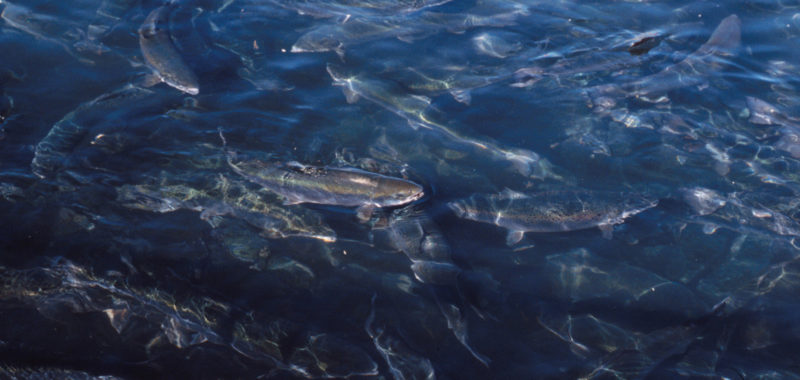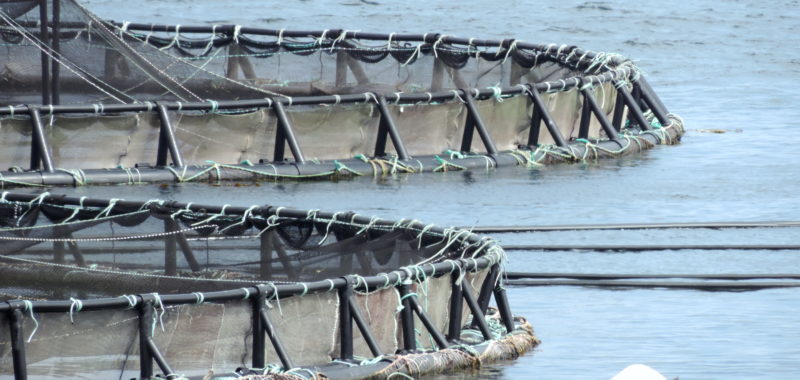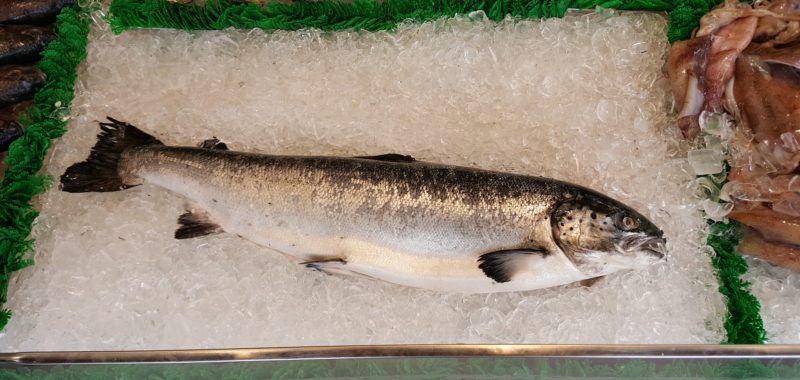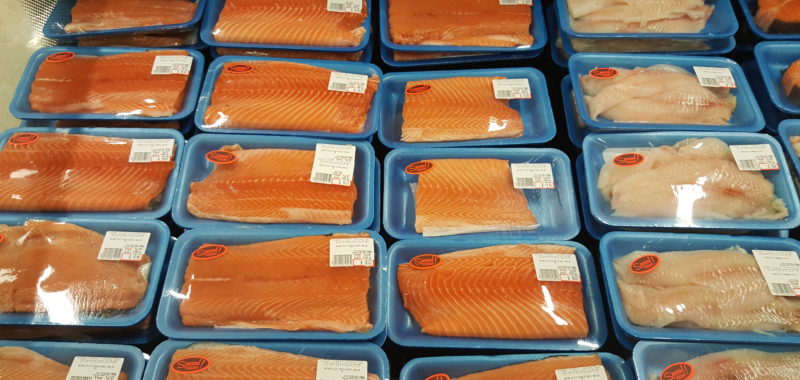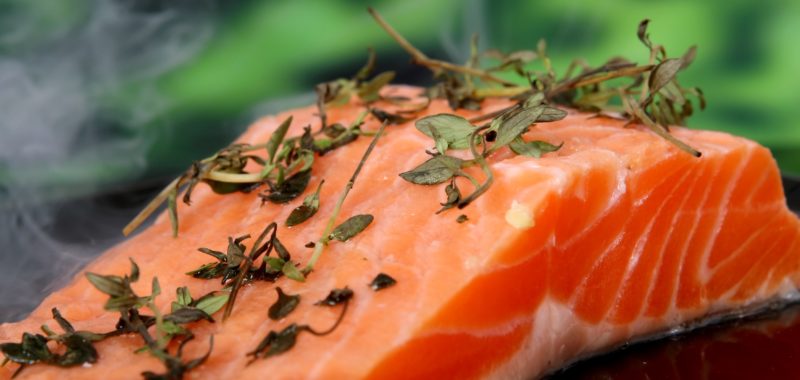Priority Species: Atlantic Salmon (farmed Atlantic Canada)
Scientific name: Salmo salar
Seafood Watch
Ocean Wise
ASC – no certified farms
The concern with open-net pen farmed Atlantic salmon is the significant threat they pose to severely depressed wild Atlantic salmon populations. A number of wild Atlantic salmon populations are listed as Endangered, Threatened or of Special Concern by the Committee on the Status of Endangered Wildlife in Canada (COSEWIC; dive deeper into the status of wild Atlantic salmon). The Inner Bay of Fundy wild Atlantic salmon population is protected under Canada’s Species at Risk Act (SARA). A recent Standing Committee on Fisheries and Oceans report acknowledges open-net pen aquaculture can negatively affect wild Atlantic salmon populations and their recovery. Key threats include the genetic and population impacts posed by farmed salmon escapees, as well as the potential disease and sea lice transfer from farmed to wild salmon.
The potential risk to North American wild salmon genetic diversity and population robustness by farmed escapees is deemed “high”.
The highly contagious infectious salmon anemia (ISA) remains the primary disease concern in Atlantic Canada, with outbreaks occurring regularly. ISA has been found in wild Atlantic salmon.
Antibiotic use by the Atlantic North American aquaculture industry is considered high. Parasiticides (i.e. pesticides) are used in substantial quantities to combat sea lice. Evidence of parasiticide resistance in sea lice has occurred. Illegal pesticide use by the industry has been documented. A number of parasiticides given to farmed salmon are considered highly toxic to Atlantic lobster, with potentially lethal concentrations and the ability to create significant impacts on lobster stocks and the associated fishery.
Other concerns include marine mammal deaths, habitat damage and pollution, and the reliance on wild fish stocks for fish feed.
The only way to eliminate the unnecessary risks to wild fish populations is by farming with land-based closed containment systems. Given the ‘closed’ nature of the system, the risk of infection by disease and sea lice are greatly reduced or eliminated. Pesticides are not used, and antibiotic use is typically much lower. Most importantly, land-based closed farms ensure farmed and wild fish are physically separated.
In the meantime, the salmon farming industry can apply the precautionary principle and take a science-driven approach to managing the impacts of open net-pen salmon farms on the marine environment. Other incremental improvements include:
Escapes: At a minimum, open-net pen systems should be regulated to set construction and facilities standards, escape prevention and response plans, and ongoing monitoring and enforcement. Government authorities should implement rigorous, robust and continuous monitoring in wild salmon ecosystems at risk from farmed salmon escapees.
Disease, Parasites and Chemicals: Locating farm sites away from wild salmon migration routes would help to minimize potential disease and parasite transfer. Further disease science and understanding is hindered by the lack of public access to farmed fish health data. A priority for the Canadian (federal and provincial) governments and aquaculture industry should be the timely disclosure and transparency of fish health event reporting.
The adoption and implementation of area or ecosystem-based management is necessary for successful disease/sea lice outbreak prevention and mitigation. Incorporating non-chemical preventative tools, such as effective fallowing periods 2 and cleaner fish (a natural predator of sea lice), could help reduce dependency on pesticides.
Markets: SeaChoice will continue to promote better labelling on salmon products sold in the Canadian market, to make it easier for consumers to identify between wild (Pacific) and farmed salmon. We will also encourage consumers, retailers and restaurants to source sustainably-caught wild Pacific salmon or farmed closed containment salmon, trout or char instead.
Aquaculture section of SeaChoice website
Related SeaChoice ASC submissions can be found here
New Report for Market Recommendations Ranks Atlantic Canadian Farmed Salmon as “Avoid” – SeaChoice press release, February 2, 2016
DFO’s Special Report on Wild Atlantic Salmon in Eastern Canada
Atlantic Salmon Federation – An industry in need of change
Common/Market Name
Salmon, Atlantic Salmon
Distribution
Farmed in Newfoundland, Nova Scotia, New Brunswick and Prince Edward Island
Harvest Method
Aquaculture methods: Open-net pen, closed containment
Management Agency
Department of Fisheries and Oceans (DFO), provinces and, in the case of PEI, a joint regulatory body
Market Distribution
United States (~60 per cent) and eastern Canada (data from Seafood Watch)
